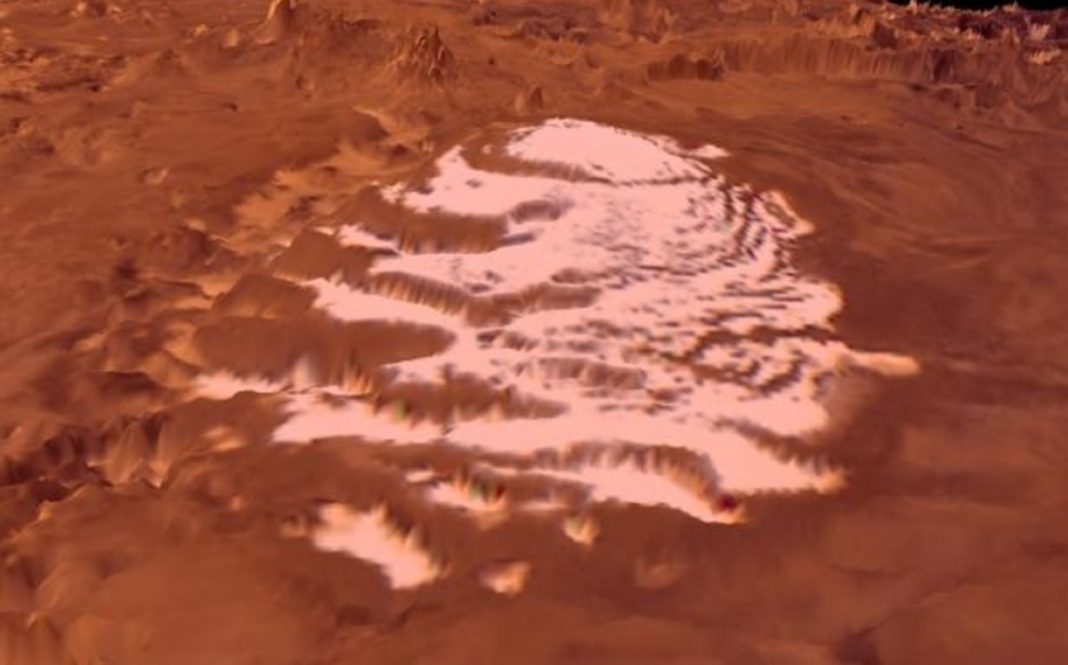Madrid /
glaciers Carbon dioxide travels to the south polar region of Mars, forming Miles thick sedimentssomething that could have lasted for more than 600,000 years. It is the conclusion of an article written by a research scientist at planetary science institutePSI) Isaac Smith, who appears in Planetary Geophysical Research Journal.
“Reservoirs of carbon dioxide, first identified in 2011, are flowing today, just like glaciers on Earth,” Smith said in a statement.
“About 600,000 years ago, andCarbon dioxide ice began to form at the south pole of Mars. Because of climatic cycles, Smith said, the ice has increased in size and mass many times over, interrupted by periods of mass loss due to sublimation. It will be only about 45 meters thick. While that, As it flowed downhill into troughs and spiral channels, troughs curved lines, where they are stagnant, It can form sediments up to one kilometer thick“, pointed out.
Recent work partially completed at PSI (funded by Smith) investigated the flow laws or drag properties of carbon dioxide ice.
This work found it CO2 ice flows about 100 times faster than H2O ice under Martian conditions And on high slopes. This is why carbon dioxide ice behaves like glaciers where the rest of the H2O mantle that supports it appears to be stationary.

“lamGlaciers have enough mass if they are to sublimate they will repeat Atmospheric pressure of the planet. It’s an astonishing amount, and Tan Potzig, chief scientist at PSI, measured it even more precisely in a 2018 paper.” The longest glacier is about 200 kilometers long and about 40 kilometers wide. This is great! This activity is ongoing, but the flow rates likely peaked about 400,000 years ago, when sedimentation was greatest. We are in a slow period because the ice mass is decreasing and this is slowing down the glaciers.”
Analysis of glacier modeling results using a model NASA’s Sea Level System and Ice Sheetssupported by co-authors and adapted by Smith to work on Mars and with carbon dioxide, showed it Carbon dioxide ice was not stirred in the usual ways.
“Ice flows into basins, just as water flows down slopes into lakes. Only glacial flow can explain the distribution we discovered in 2018,” says the scientist.
Ice, an element that unites Earth with Mars and Pluto
Additional work by Smith and his team found several surface features that are a good counterpart to features we see in glaciers on Earth. These include topographic features, fissures, and pressure edges that are similar to land features. This reinforced the conclusions and provided a basis for comparison with the models.
Earth, Mars and Pluto are the only two solar system bodies known to actively flow ice., but they may not be alone. There are many types of ice in the solar system, and with the increase in the number of dwarf plants, it is likely that some of them contain glaciers from Carbon monoxide, or methane, is more exotic than the newly discovered dry glaciers on Mars.

amt

“Wannabe internet buff. Future teen idol. Hardcore zombie guru. Gamer. Avid creator. Entrepreneur. Bacon ninja.”




